Dull grey, cold and dusty, that’s what characterises the period between winter and spring. At least that’s what I hear all around me. Even worse, people tell me that this is the best time to do all your late house work as there is nothing to see outside anyway. No need to go to the beach or a forest as there is no warm swimming water or even leaves on the trees. The only “new” birds coming back are Red-Winged Blackbirds and those are not interesting.
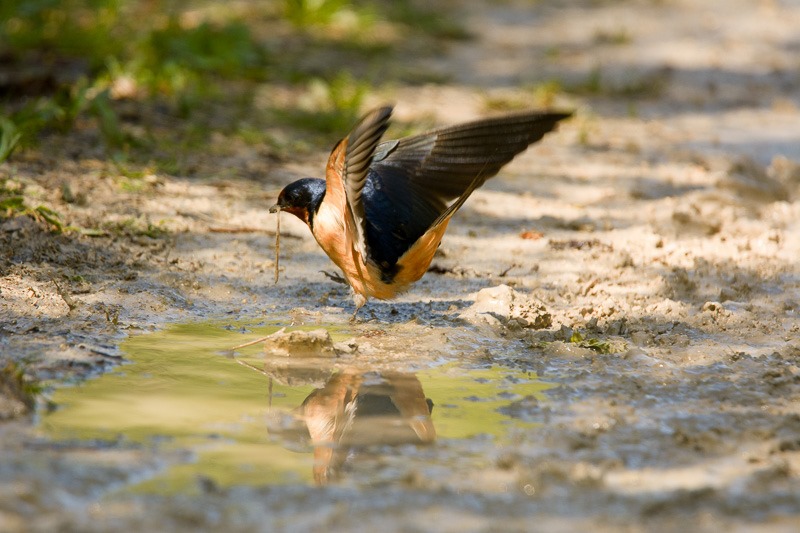
There are too many of them and they are everywhere. This is from people who do not look around them.
Once I was walking in a street looking around me for some interesting details. I didn’t even have a camera with me at that time. An elderly lady stopped me and asked “What are you looing at so intently?”, I answered “nothing in particular, just details” after which she decided that I must be a photographer. Nobody else would look around in that way.
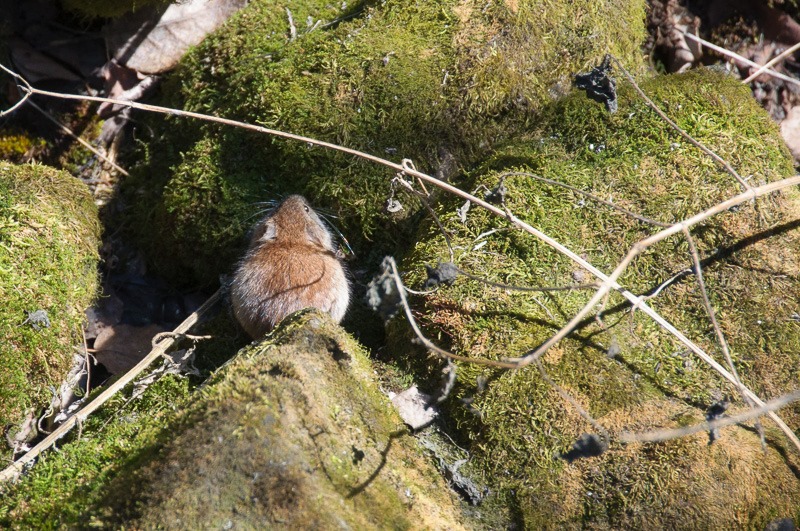 Hiding from slithering danger
Hiding from slithering danger
So, yes, I can think I’m a photographer, but not a professional one. I haven’t sold any of my pictures, although any of them can be for sale. One thing is sure, I always look around intensively to see something out of the ordinary. Imagine a den full of emerging, hungry snakes. We have those in Manitoba and that is a world class site for observing the Red Garter Snakes in spring and fall. Would you believe that there are still mice around? Well, there are mice, even if they don’t advertise their presence, and most certainly not to the snakes ![]() .
.
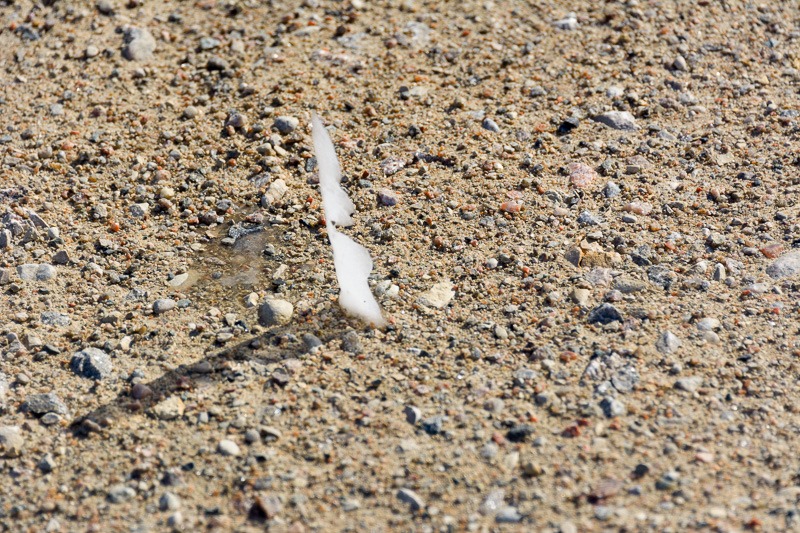 Ephemera
Ephemera
The last shards of ice on a cold morning. Yes, ice is still there in spring and remains there in some places until May-June. This tiny shard of ice didn’t have a chance against the strengthening sun. An ephemeral image that I might never see again. Click!
 Icy but futile resistance
Icy but futile resistance
Ice, resisting the ever growing flow of the water. With temperatures rising, this snow or ice-bank has no chance of survival. True, in the beginning of the winter, all photographers post pictures with captions like “Winter wonderland” or “Virginly clean”. By the end of the winter, nobody posts anything anymore in the hope that the cold and the snow will disappear a bit faster. Nature’s sculptures will become more interesting at the end of the season as water will melt ice in the most unlikely ways.
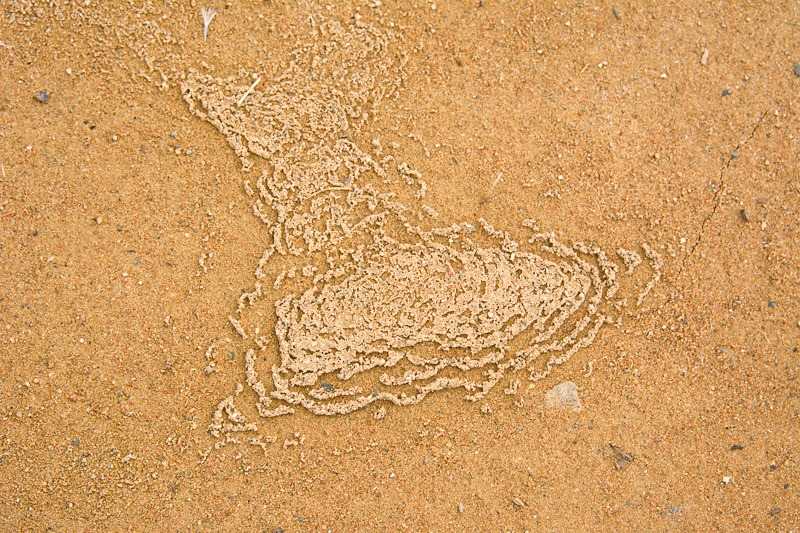 Remnants
Remnants
Snow will melt away from the sand, but if the sand is dry enough to blow in the wind, small accumulations on the wet snow will start to form. When the snow finally melts completely, the sand falls back to the ground and forms these little sculptures. Another half day of dry wind and even these formations are gone forever.
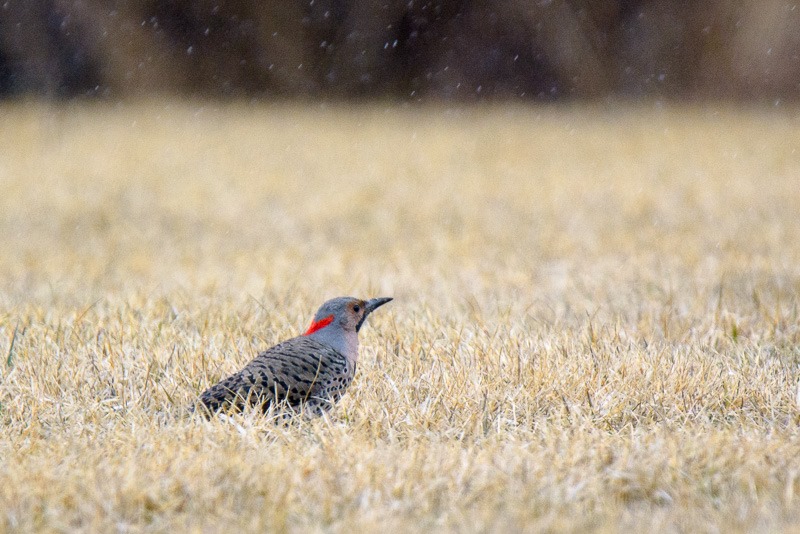 Northern Flicker
Northern Flicker
Northern Flickers in the rain. These birds like to eat worms and insects in spring. sometimes they are barely visible in the long dry grass. I guess they like it that way as predators can’t see them either. Most photographers don’t, that much I am sure of ![]() .
.
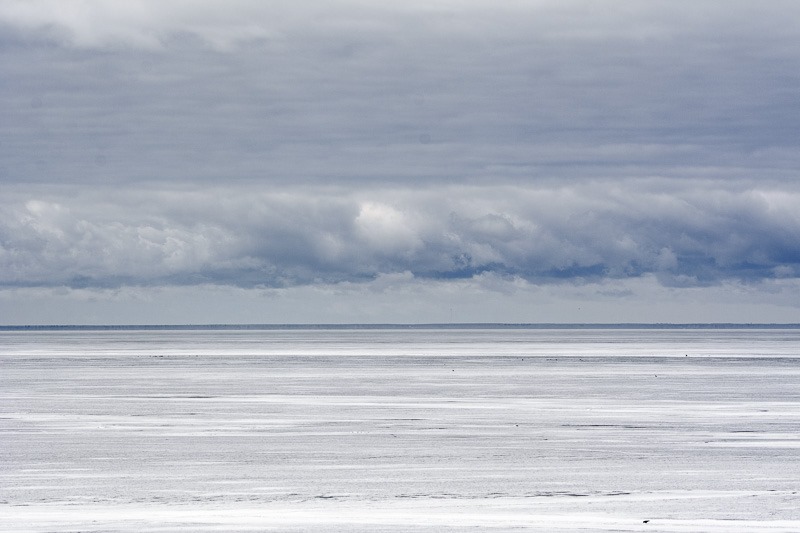 A colourless view of an icy plain
A colourless view of an icy plain
But even if the snow and ice are gone from the land, the lakes will still have more than enough ice on them to last another month without open water. The wind blowing over the icy surface would have been a dream for early adopters of air conditioning. 240 miles of ice will most definitely cool down the wind to make everything still icy cold. Colours are mostly invisible, but the above picture is in colour, not in black and white.
 Prairie Crocus in the drylands
Prairie Crocus in the drylands
But then, the first signs of “real” spring are there, with the arrival of the Prairie Crocus, a species that only bears a faint resemblance to a crocus and has none of the other characteristics. In spring, this is seriously the most sought-after flower by photographers as it heralds the real arrival of spring.
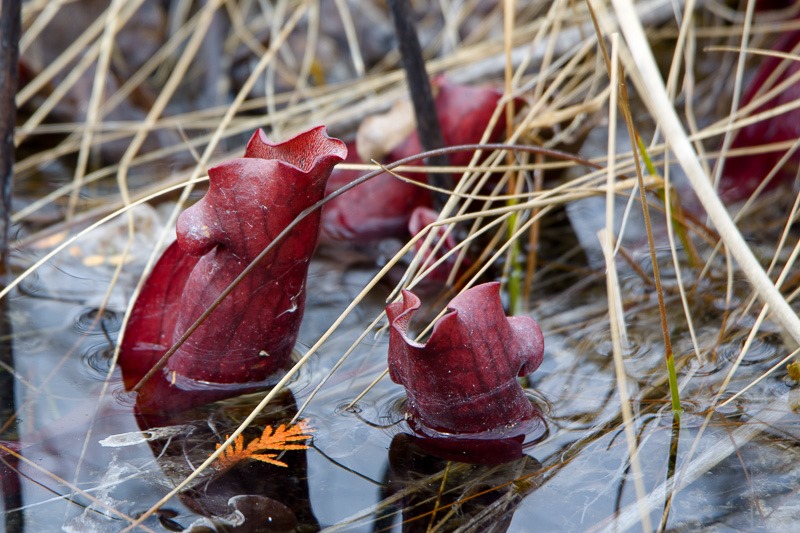 Pitcher Plants in the Wetlands
Pitcher Plants in the Wetlands
But it’s not the only plant that has an early start in spring, although the Pitcher Plants in the wetlands are arguably less photogenic. The meat coloured leaves are already popping up and will continue to grow and attract insects. These plants are carnivorous, so they will want to have the first shot at any of the flying insects available in early spring.
So? Nothing to see? Dull and grey? I don’t agree. All you have to do is go out and find those subjects.
Until next time…
